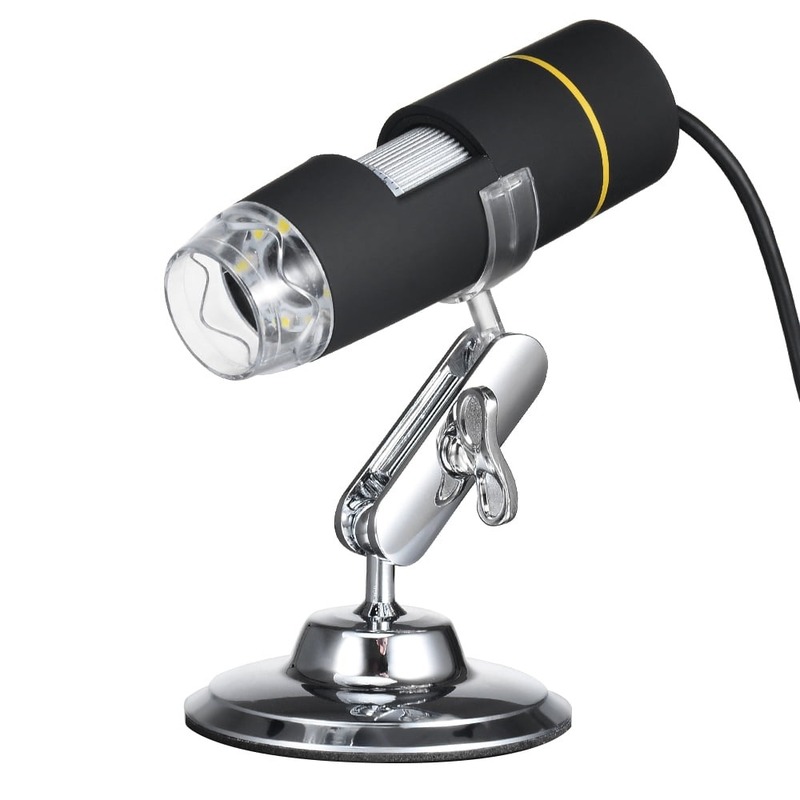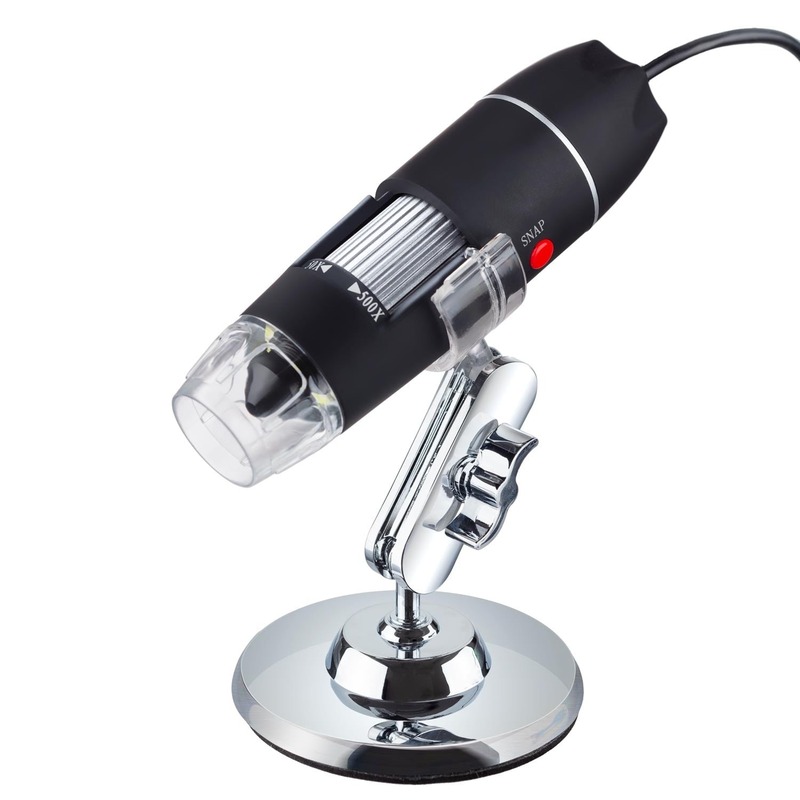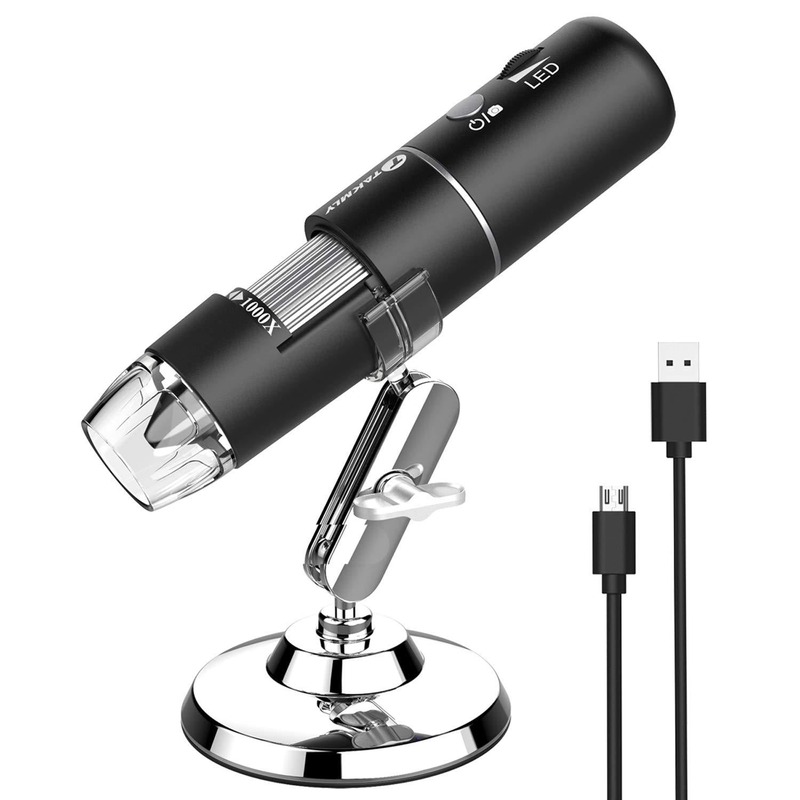Introduction to USB Microscopes
In the quest to explore the minuscule details of our world, the USB microscope has become a key tool. Compact and versatile, these microscopes connect directly to a computer or a tablet via a USB port. They allow users to view and capture high-resolution images and videos of tiny subjects. The beauty of a USB microscope lies in its simplicity and ease of use. Unlike traditional microscopes, it does not require complex setup procedures or additional equipment. Often equipped with LED lights for illumination, USB microscopes enhance our ability to see the smallest details in stark clarity. Ideal for students, hobbyists, and professionals, these devices bridge the gap between science and accessibility. With a USB microscope, the small world around us becomes an open book, waiting to be read and explored.

Key Features to Look for in a USB Microscope
When hunting for the perfect USB microscope, certain features stand out as essential for a satisfactory experience. Firstly, magnification power is a primary consideration. This determines the extent to which the microscope can enlarge small objects. Look for models that offer a range of magnification levels to suit different types of observations.
Another key feature is resolution. The higher the resolution, the more detail you can see in your specimens. A high-resolution USB microscope will deliver clearer and more defined images. This is crucial when capturing minute details.
Illumination is also vital. Most USB microscopes come with built-in LED lights which provide the necessary lighting to enhance image quality. Adjustable lights can be particularly useful for reducing glare and shadows on reflective subjects.
Consider the software compatibility of the USB microscope. It should work seamlessly with your operating system and offer easy-to-use tools for image capture and analysis.
Additionally, portability and ease of use are important. A compact, lightweight microscope is ideal for transporting between locations or for fieldwork. Simplicity in operation allows for a swift setup and user-friendly experience, which is especially beneficial for students or beginners.
Finally, don’t overlook build quality. A USB microscope should be sturdy and durable to withstand frequent use. Robust construction also contributes to consistent and reliable observations over time.
Prioritizing these features will help assure that your chosen USB microscope meets your specific needs and provides a rewarding viewing experience.
How USB Microscopes Work
Understanding how USB microscopes function is crucial for appreciating their capabilities. At its core, a USB microscope consists of a digital camera attached to a miniature lens system. This setup captures images of samples that are too small to be seen with the naked eye. When you place an object under the microscope, the lens magnifies the image.
The built-in LED lights then illuminate the specimen, reducing shadows and enhancing detail. Once the light reflects off the specimen, the camera sensor captures the image and sends it through the USB cable to your computer. Here, specialized software allows you to view, edit, and save the magnified image. This process is not only straightforward but also provides instantaneous visual feedback, making it ideal for both real-time observations and educational purposes.
Most USB microscopes come with a flexible arm or stand. This feature lets you easily adjust the microscope’s distance from the specimen. By doing so, you can change the magnification level and focus to get the best possible view.
Moreover, the software included with the USB microscope typically offers features like measurement tools, image enhancements, and the ability to record videos. Such functions extend the microscope’s utility, allowing for comprehensive analysis and sharing.
Overall, the simplicity and direct feedback offered by USB microscopes revolutionize the way we examine the tiny details of our world. They provide an accessible gateway to the microscopic universe with just a few clicks.
Applications of USB Microscopes in Different Fields
The versatility of USB microscopes allows them to be used across various fields, each with unique benefits. In education, they transform classrooms by providing students with an up-close view of the microscopic world. They enable interactive learning experiences in biology, earth science, and more. In research, scientists and academics employ USB microscopes to analyze samples quickly. They’re essential for detailed study and documentation.
In the healthcare sector, dermatologists and pathologists can use USB microscopes for skin examinations and analyzing tissue samples. Quick digital image capturing aids in diagnosing and sharing information for consultations. For quality control in manufacturing, these microscopes check for product defects. They help in maintaining high standards by magnifying the minutest details of electronics, textiles, and other materials.
Technology enthusiasts and hobbyists find USB microscopes particularly useful for close-up work like circuit board inspections and fine arts. They’re great for coin collectors and model builders who require precision. USB microscopes have even made their way into the fieldwork of environmental scientists and botanists. They use them to study plants, insects, and soil samples directly in their natural habitat.
In forensics, USB microscopes play a pivotal role in examining evidence like fibers, residues, and documents. The ability to capture and analyze details can be critical to investigations. Furthermore, in numismatics and philately, where the finer points of coins and stamps are scrutinized, the enhanced imaging from USB microscopes is invaluable.
Each application benefits from the key features of USB microscopes, like portability, ease of use, and high-resolution image capture. This adaptability in implementation showcases the profound impact that USB microscopes have beyond traditional scientific environments.

The Benefits of Using USB Microscopes for Education
USB microscopes bring a new dimension to education. They make learning interactive and engaging for students. Here are the key benefits of integrating USB microscopes into academic settings:
- Enhanced Visual Learning: USB microscopes display detailed images on a computer screen. This allows for a group view, which makes science more inclusive and collaborative.
- Interactive Experiences: Students get hands-on with samples. They can take control of their learning by adjusting the device and exploring specimens.
- Real-Time Analysis: Learners see results instantly. This real-time observation speeds up the learning process. The excitement of immediate discovery keeps students interested.
- Accessibility for All Ages: These microscopes are user-friendly. Young kids to university students can operate them with ease, making the technology accessible to all education levels.
- Cost-Effective: Compared to traditional microscopes, USB microscopes are often more affordable. Schools can provide more units, ensuring wider access for students.
- Digital Documentation: With USB microscopes, work can be saved and shared digitally. Students can store their findings, create reports, and even share images online for collaborative projects.
- Encourages STEM Education: By making science tangible, USB microscopes boost interest in STEM fields. Students gain technical skills through the use of innovative tools.
In summary, USB microscopes are a powerful educational tool. They transform how students view and interact with the microscopic world. These devices foster a deeper understanding and appreciation of science.
Choosing the Right USB Microscope for Your Needs
When it comes to selecting a USB microscope, aligning your choice with your requirements is crucial. Below are factors to guide you in making an informed decision:
- Assess Your Purpose: Define what you’ll mainly use the USB microscope for, be it education, hobbyist projects, or professional analysis.
- Magnification Needs: Consider the level of magnification suitable for your tasks. Higher magnification is necessary for in-depth scientific research.
- Image Quality: Look for a USB microscope with high resolution for sharp, detailed images. Clear visuals are vital for precise observations.
- Compatibility: Ensure the microscope’s software is compatible with your computer’s operating system. Easy setup and operation are key.
- Portability Concerns: If you plan to move the microscope often, opt for a lightweight, compact model.
- Durability: A sturdy build is important, especially for frequent use. It ensures long-term reliability.
- Lighting Options: Adjustable LED lights can help reduce glare and improve image quality across various specimens.
- Budget: Set a price range you are comfortable with. Compare features and prices to find the best value for your money.
Remember, taking the time to weigh these considerations will pave the way for a purchase that fits your specific needs and maximizes the potential of the USB microscope in your endeavors.
Tips for Capturing Clear Images with a USB Microscope
To get crisp, clear images with your USB microscope, follow these practical tips:
- Stabilize Your Microscope: Ensure the microscope stand is on a flat surface to avoid shakes. This reduces blurriness.
- Adjust the Lighting: Play with the built-in LED lights to find the perfect balance. Good lighting brings out details.
- Fine-Tune the Focus: Slowly turn the focus wheel until the image sharpens. It takes a steady hand.
- Clean the Lens: Wipe the lens with a soft, lint-free cloth. Dust and fingerprints can blur images.
- Use the Right Software Settings: Explore your software’s features for the best results. Adjust the contrast and brightness as needed.
- Avoid Over-Magnification: Don’t zoom in too far. It can make images grainy. Use just enough magnification.
- Keep the Sample Still: If looking at a live specimen, try to calm it. Movement leads to blurry images.
- Capture Multiple Images: Take several shots. Later, pick the clearest one.
- Practice: The more you use your USB microscope, the better your images will be. Experience counts.
Capturing high-quality images with a USB microscope is not difficult. With these tips, you can excel in observing and documenting the small wonders.

Top Recommended USB Microscopes on the Market
When you’re ready to buy a USB microscope, consider a few top picks. These models stand out for their quality, features, and user reviews. They can serve a range of needs, from education to professional use.
Carson MicroBrite Plus
This pocket-sized microscope offers up to 120x magnification. It’s ideal for students and hobbyists. The built-in LED light provides a clear view of samples.
Plugable USB 2.0 Digital Microscope
With a 250x magnification and a 2.0 MP resolution, this is a great pick for detailed observations. It works well with various operating systems and includes a flexible arm for ease of use.
Celestron Digital Microscope Pro
This model offers a higher magnification of up to 200x. With a 5 MP camera, it captures high-resolution images. It’s suitable for both amateurs and professionals.
Jiusion Digital Microscope
Affordable and versatile, the Jiusion microscope can magnify up to 1000x. The inclusion of a calibration ruler makes it handy for precise measurements.
Dino-Lite USB Handheld Digital Microscope
For those needing advanced features, this microscope offers a magnification of up to 470x. It has a high-quality camera for crisp images and is compatible with specialized imaging software.
Remember, when you’re choosing a USB microscope, match the model to your needs. Check magnification, resolution, compatibility, and your budget. With the right USB microscope, exploring the small world becomes a thrilling adventure.





